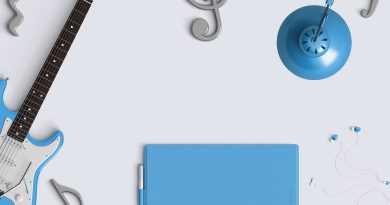Mastering the Basics: A Guitar Beginner’s Guide to Recording Techniques
Mastering the Basics: A Guitar Beginner’s Guide to Recording Techniques
As a guitar beginner, one of the most exciting aspects of learning to play is being able to record your own music. Whether you want to share your creations with friends and family, or even pursue a career in music, understanding the fundamentals of recording techniques is essential. In this guide, we will explore the basics of recording your guitar playing, from setting up your equipment to mastering the art of capturing your unique sound.
Setting Up Your Equipment
Before you can start recording your guitar playing, you will need to gather the necessary equipment. Here is a list of the essential items you will need:
– A computer or laptop
– An audio interface
– A microphone
– A microphone stand
– Recording software
Once you have all of the necessary equipment, you will need to set up your recording space. Find a quiet area in your home where you can play without distractions. Position your microphone stand so that it is pointing towards your guitar, and adjust the height and angle as needed.
Connecting Your Guitar to the Audio Interface
To begin recording, you will need to connect your guitar to the audio interface. Most audio interfaces have a dedicated input for guitars, typically labeled as “Hi-Z” or “Instrument.” Simply plug your guitar cable into this input and connect the other end to your guitar. Make sure the volume on your guitar is set to an appropriate level before recording.
Adjusting Your Recording Levels
Before you start recording, it is important to adjust your recording levels to ensure that the sound is not too loud or too quiet. Open your recording software and locate the input levels. Play your guitar at a normal volume and adjust the input levels until the sound is clear and free of distortion.
Recording Techniques
Now that you have set up your equipment and adjusted your levels, it’s time to start recording. Here are some basic recording techniques to help you capture your guitar playing effectively:
– Experiment with microphone placement: The placement of your microphone can significantly impact the sound of your recording. Try positioning the microphone at different distances and angles from your guitar to find the best sound.
– Use headphones: When recording, it is essential to use headphones to monitor your playing. This will allow you to hear any mistakes or inconsistencies in your performance and make adjustments as needed.
– Record multiple takes: Don’t be afraid to record multiple takes of the same song or riff. This will give you the opportunity to choose the best take and create a polished recording.
– Pay attention to your tone: Experiment with different settings on your guitar and amplifier to find the tone that best suits your playing style. Pay attention to the balance of highs and lows in your recording.
Mixing and Mastering
Once you have recorded your guitar playing, the next step is to mix and master your tracks. Mixing involves adjusting the levels of each instrument in your recording to create a balanced and cohesive sound. Mastering involves applying effects and processing to polish your final mix.
Here are some tips for mixing and mastering your guitar recordings:
– EQ your guitar tracks: Use an equalizer to adjust the frequencies in your guitar tracks. This will help to eliminate any harsh or muddy sounds and create a clear and balanced mix.
– Add reverb and delay: Experiment with adding reverb and delay effects to your guitar tracks to create depth and ambiance. Be careful not to overdo it, as too much reverb can muddy the sound of your recording.
– Use compression: Apply compression to your guitar tracks to even out the dynamics and make your playing sound more consistent. This can help to bring out the nuances in your performance.
– Reference other recordings: Listen to professional recordings of guitar playing to get a sense of how your tracks should sound. Pay attention to the balance of instruments and the overall tone of the mix.
Conclusion
Recording your guitar playing is a rewarding experience that can help you improve your skills and share your music with others. By mastering the basics of recording techniques, you can create professional-sounding recordings that showcase your unique style and talent. With practice and dedication, you can become a confident and proficient guitar recording artist.






